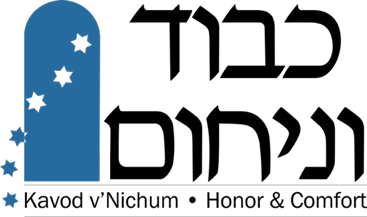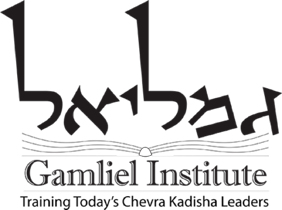Involving Chevrah Members in Education
The Role of the Chevrah in the Synagogue and the Community
Historically, when Jews moved into a new community, the first thing they established was a cemetery—not a synagogue or a house of study. Death comes to all, so it must come first. Similarly, Jewish death practices created a foundation for the community over the centuries.
Having a group of dedicated community members who take care of the dead enabled others to continue working when there was a death, for the Talmud prohibited the community from working until the dead were taken care of. But if there was a dedicated group of people doing that, then others were given permission to continue their lives. (Moed Katan 27B)
Clothe the naked, visit the sick, comfort the mourner, bury the dead. According to the Rabbis of the Talmud (Sotah 14a), that is how we walk after G-d and acquire a godly character. Note that three of the four are explicitly related to the work of the Chevrah Kadisha. These are foundational concepts that underlie what community is all about.
In many communities, the local chevrah is the focal point when death occurs, coordinating with funeral homes, rabbis, families, synagogues, and community members. The chevrah ensures that the loved ones are supported, that minyanim are formed for Kaddish, that the meal of consolation happens appropriately, that supplies are present when needed at the funeral home, that the right kind of caskets are there when needed, and that someone is there to keep the deceased company between death and burial to comfort the soul. All of this generally happens behind the scenes, with the community often blind to the activity, yet expecting it to happen.
Today, many Jews simply assume that “somebody” will take care of the dead when the time comes. They are not tuned into who or what Chevrah Kadisha is or does, or how it helps the community. This is where educational programs on Jewish death practices come in. It is so very important that every community member in every community fully understands what a Jewish burial is, how beautiful and dignified Jewish death rituals are, what it means for the chevrah to midwife a soul between this realm and the next, and what all this means for them and their family.
The chevrah can help in educational efforts. In fact, their participation can make a huge difference, as they can speak from personal experience.
The Power of Chevrah Participation in Education
When educators share personal stories as part of their teaching, the education becomes far more impactful. People relate to stories. When chevrah members share what it feels like to help a soul move between realms of existence through the taharah ritual, people get inspired to arrange taharah for themselves and their loved ones.
Chevrah Kadisha work is not secret work. It is intimate and therefore very private, so the details of someone’s taharah are not shared with anyone who was not present, out of respect for the dignity and privacy of the deceased and their family. But stories about this holy work, without names or specifics, can be shared and are shared in educational programs all over North America, and probably all over the world.
The power of this work, as it affects people emotionally, spiritually, and even socially and religiously, is enormous. Chevrah members share story after story of how this work has enriched and uplifted their lives, broadened their perspectives, connected them more closely to community, and deepened their connections to the Divine. (For some example stories, see Jewish Rites of Death, Stories of Beauty and Transformation.)
These stories can be powerful educational tools. The authenticity of people sharing their stories facilitates the learning, while transmitting the beauty and emotional impact of the work. The fact that one does not have to be an observant Jew to receive the services of the chevrah, or to participate in this holy work, are often surprising facts to many Jews. Stories help them understand that we are all holy beings; hence we all get treated the same when we die.
Involving chevrah members in educational programs is an effective way to reach the entire community, and it is taking advantage of the wisdom and understanding they have gained through participation in one of the most holy of mitzvot.
Expanding the Scope of Chevrah Kadisha Work
Some Chevrot Kadisha limit the scope of their work to performance of taharah (ritual preparation of the body for burial). Others extend this to include shmirah (accompanying the body between death and burial). Often that’s all the community can handle.
But the holy work of taking care of the dead really extends far beyond these, as a continuum of care at the end of life. It can, in addition, include any or all of the following:
- visiting the sick (bikkur cholim),
- arranging for burial and memorial services,
- purchasing burial plots,
- digging and filling in graves,
- arranging for meals of consolation,
- organizing shiva minyanim (getting enough people present so the Mourner’s Kaddish can be said),
- providing an ombudsman to the family—an interface between the family and the rabbi, the funeral home, and the community—so the family doesn’t have to negotiate decisions alone, and
- providing counseling when necessary for the mourners.
A majority of chevrot today are expanding their role in the community to support many of these aspects on the continuum of care. Education is not on the list above, but many chevrot are also very active in community and synagogue educational programs about Jewish practices. Educating the community is a very important part of the work of the chevrah, and should be expanded when and wherever possible.

